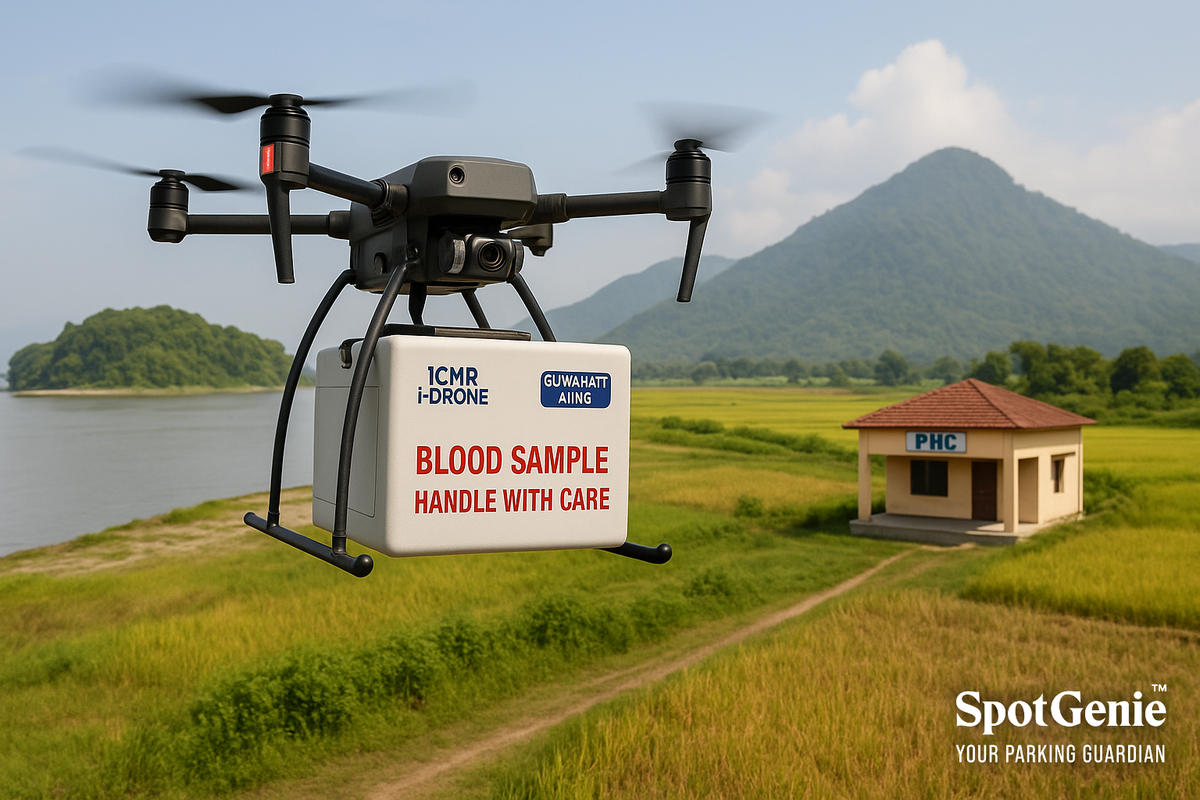Drone-Based Medical Delivery in India
Explore how drone pilots in India are delivering blood, vaccines, corneas to remote areas, cutting critical healthcare delivery times dramatically.

Drone Medical Delivery in India: Blood, Vaccines & Corneas in Flight
SpotGenie Gyaan unpacks how India’s skies are being transformed into life-saving routes—thanks to drones delivering medicine, blood, and even human tissues across tough terrains.
What Is Medical Drone Delivery?
Medical drone delivery refers to the use of Beyond Visual Line of Sight (BVLOS) unmanned aerial vehicles to transport critical health supplies—like blood units, vaccines, and corneas—to hospitals, health centers, and emergency points, especially in areas where time is a matter of life or death.
Key Pilot Projects Taking Flight in India
- ICMR’s i-DRONE: India's first organized trial of drone-based vaccine and blood delivery in Arunachal Pradesh, Manipur, and Nagaland. It includes cornea transport trials in Haryana with safe temperature preservation.
- AIIMS Guwahati: Successfully deployed drones to deliver pharmaceuticals to river islands and remote rural health centers.
- Guntur, Andhra Pradesh: Local health authorities launched drone-based medication distribution from government hospitals to distant PHCs—cutting delivery times by over 70%.
- AFMS (Armed Forces Medical Services): Planning to use drones for delivering blood and medicines in extreme terrains like Ladakh, Northeast, and border zones.
Impact and Efficiency Gains
These medical drone trials have shown dramatic gains:
- Reduced delivery time from 60+ minutes to just 20–25 minutes.
- Corneal tissue maintained at safe temperatures even during multi-km flights.
- Over 650 drone sorties conducted across India delivering over 10,000 medical items as of mid-2025.
- Enhanced emergency responses during floods and maternal delivery crises.
Challenges to Scale
- Regulatory: Requires DGCA clearances for BVLOS operations.
- Cost: Initial cost of drones and cold-chain payloads remains high.
- Integration: Needs real-time coordination with hospital labs, blood banks, and clinics.
- Weather & Terrain: Monsoon winds, hilly terrains, and low-visibility zones impact performance.
Why Citizens and Policymakers Should Take Note
- Public health departments: Can plan district-level drone grids for medical transport.
- NGOs and startups: Should explore local health logistics solutions using drone partners.
- Rural health workers: Gain access to critical resources in time-sensitive cases like postpartum hemorrhage, snakebites, or immunization shortages.
Conclusion
India’s skies are being reimagined as life-saving highways. As trials mature into deployment, drones could become a routine part of medical supply chains, connecting underserved areas with world-class care—one flight at a time.
Follow us on:
🅾 Instagram |
ⓕ Facebook |
𝕏 X |
▶️ YouTube |
🟢 WhatsApp



